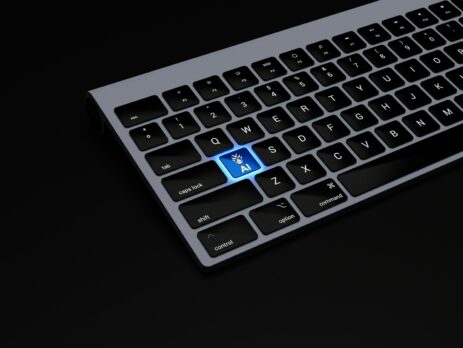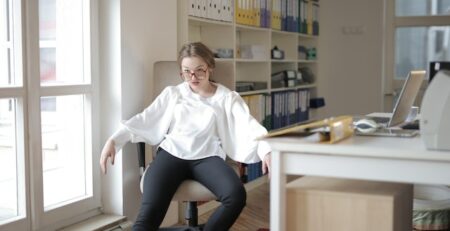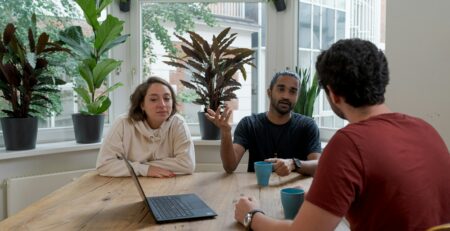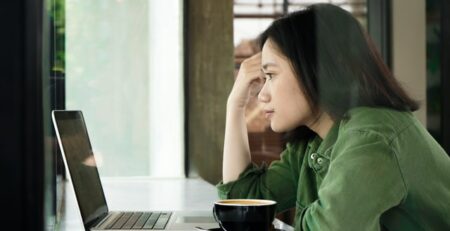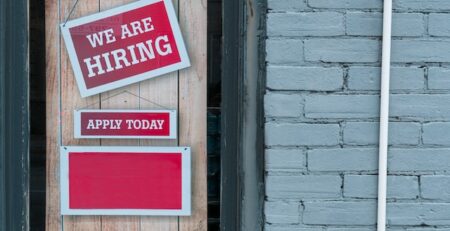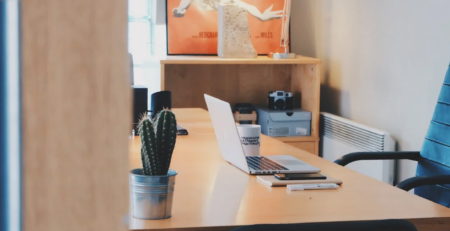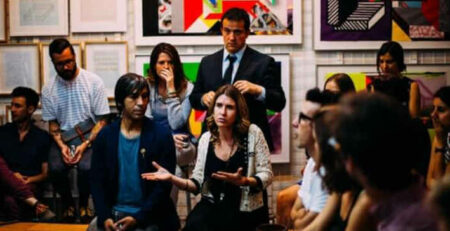Artificial Intelligence in Art: Recruiting AI Artists
The integration of artificial intelligence (AI) into the art world has sparked a transformative movement, altering not only the creation process but also the recruitment of artists. As AI continues to evolve, its capabilities expand into the realm of creativity, traditionally viewed as a uniquely human trait. This shift has led to the emergence of AI artists—algorithms capable of generating stunning visual art, music, and literary works that resonate with human emotions and aesthetic sensibilities.
Recruiting AI artists involves a blend of technology and traditional artistic recruitment strategies. Creative staffing agencies are now tasked with understanding both the technical aspects of AI and the creative process to effectively place AI systems in roles where they can produce meaningful art. This new era of recruitment poses unique challenges and opportunities for those in the creative industries.
The rise of AI in art has been met with both excitement and skepticism. Proponents argue that AI can push the boundaries of artistic creation, offering new perspectives and possibilities that were previously unimaginable. Critics, however, raise ethical questions and concerns about originality and the definition of art itself. Despite these debates, the practical aspect of integrating AI into the creative workforce continues to progress.
For creative staffing agencies, the task now includes not only finding talented human artists but also identifying and recruiting AI systems that complement and enhance the creative capabilities of human teams. This dual approach ensures that the art produced is not only technologically advanced but also deeply meaningful and culturally relevant.
Understanding AI’s role in art creation requires a deep dive into how these systems are designed, trained, and implemented. AI artists are typically powered by machine learning algorithms that learn from vast datasets of existing artwork. By analyzing patterns, styles, and techniques, these AI systems can generate works that are both derivative and innovative, blurring the lines between human and machine-made art.
The recruitment process for AI artists also involves assessing the ethical implications of their use. Agencies must consider issues such as copyright, the authenticity of the creative process, and the impact of AI on human artists’ livelihoods. These considerations are crucial in ensuring that the deployment of AI in art remains responsible and beneficial to the broader artistic community.
Moreover, the integration of AI into creative roles highlights the importance of collaboration between humans and machines. This partnership can lead to hybrid forms of art, where human creativity is augmented by AI’s analytical and generative capabilities. Such collaborations may define the future landscape of art, making it essential for recruiters to foster environments where humans and AI can co-create effectively.
As the demand for AI-generated art increases, so does the need for platforms and marketplaces where such art can be showcased and sold. Creative staffing agencies play a crucial role in this ecosystem, not only by recruiting AI artists but also by facilitating their integration into the commercial art world. This includes negotiating contracts, managing rights, and ensuring fair compensation for both human and AI contributors.
The future of art is undeniably intertwined with the advancements in AI technology. As AI continues to make inroads into creative fields, the role of creative staffing agencies will become more complex and integral. These agencies must navigate the technical, ethical, and commercial landscapes of AI in art, ensuring that the fusion of technology and creativity benefits all stakeholders involved.
In conclusion, the recruitment of AI artists represents a significant shift in the art world, one that challenges traditional notions of creativity and artistic expression. As AI technology advances, creative staffing agencies are at the forefront of defining how art is created, consumed, and valued in the digital age.
Most Asked Questions About Artificial Intelligence in Art: Recruiting AI Artists
- What are the qualifications and skills required to recruit AI artists?
- How do creative staffing agencies evaluate the potential of AI artists?
- What are the ethical considerations in recruiting AI artists?
- How is AI changing the traditional roles within creative teams?
- What are the challenges faced by agencies in integrating AI artists into the workforce?
- How do AI artists collaborate with human artists?
- What future trends are expected in the recruitment of AI artists?

What are the qualifications and skills required to recruit AI artists?
Recruiting AI artists requires a unique set of qualifications and skills that blend technical knowledge with artistic sensibility. Firstly, recruiters must have a solid understanding of artificial intelligence technologies, particularly machine learning and neural networks. This technical knowledge helps in assessing the capabilities and potential of AI systems to produce creative work.
Additionally, a background in art and design is crucial. Recruiters should be familiar with various art forms, styles, and historical art movements. This knowledge allows them to evaluate the aesthetic quality of the art produced by AI and its relevance to current artistic trends.
Experience in the tech industry, especially in roles that involve working with AI, is highly beneficial. This experience provides insights into the challenges and possibilities of AI technology, making it easier to identify AI systems that are well-suited for artistic creation.
Strong analytical skills are necessary to interpret the data used and generated by AI artists. Recruiters must be able to analyze and understand the algorithms’ decision-making processes to ensure that the AI’s creative output aligns with the artistic vision and goals of the hiring company or client.
Communication skills are also essential, as recruiting AI artists involves facilitating collaboration between human artists, technologists, and AI systems. Recruiters must be able to clearly articulate the capabilities and limitations of AI to all stakeholders involved.
Problem-solving skills are crucial, as the integration of AI into creative processes often involves navigating new challenges and unforeseen issues. Recruiters need to be adept at finding innovative solutions that satisfy both the artistic and technical requirements of projects.
Understanding of copyright and intellectual property law is important, given the legal complexities surrounding AI-generated art. Recruiters must ensure that the use of AI in art complies with existing laws and respects the intellectual property rights of human artists.
Empathy and ethics are vital, as the use of AI in art raises significant ethical questions. Recruiters must consider the impact of AI on human artists and the broader cultural implications of AI-generated art.
Lastly, a commitment to continuous learning is essential in this rapidly evolving field. Recruiters must stay updated on the latest developments in AI technology and art to effectively recruit AI artists who can push the boundaries of what is creatively possible.
These qualifications and skills ensure that recruiters can successfully navigate the complex interplay between art and technology, paving the way for innovative and meaningful AI-generated art. For more insights on managing a diverse workforce that includes AI, visit Tips for Managing a Remote Work Force.
How do creative staffing agencies evaluate the potential of AI artists?
Evaluating the potential of AI artists is a critical task for creative staffing agencies, requiring a blend of technical assessment and artistic judgment. The first step in this evaluation process involves examining the technical foundation of the AI, including the algorithms used and the data on which it has been trained. This technical review helps determine the AI’s ability to learn and adapt to new artistic tasks.
Agencies also assess the originality and creativity of the art produced by the AI. This involves comparing AI-generated works with a wide range of human-created art to identify unique elements and innovative approaches. The ability of AI to introduce new perspectives and techniques in art is a key indicator of its potential.
The versatility of the AI artist is another important factor. Agencies explore the range of styles and mediums the AI can work with, from digital painting and sculpture to multimedia installations. A versatile AI artist is more valuable as it can be employed in various creative projects.
User feedback is crucial in evaluating AI artists. Agencies gather reactions and critiques from artists, galleries, and the public to gauge the emotional and aesthetic impact of AI-generated art. This feedback helps refine the AI’s output and align it with human artistic standards.
Performance metrics are used to quantitatively assess the AI’s artistic capabilities. These might include measures of efficiency, such as the speed of art generation, and effectiveness, such as the success rate of art pieces in eliciting desired emotions or winning art competitions.
Collaborative potential is also evaluated, particularly how well the AI can work alongside human artists. Agencies look for AI systems that can complement and enhance human creativity, rather than replace it. This involves testing the AI in collaborative settings and noting its impact on the creative process.
Longevity and adaptability are considered to ensure the AI artist remains relevant as artistic trends evolve. Agencies assess whether the AI can adapt to new artistic challenges and continue to produce relevant work over time.
Cost-effectiveness is also a factor, especially in commercial art production. Agencies calculate the return on investment in AI artists by comparing the costs of training and maintaining AI systems with the benefits, such as the ability to produce large volumes of art quickly.
Ethical considerations play a significant role in the evaluation process. Agencies must ensure that the use of AI in art adheres to ethical standards, respecting the rights and contributions of human artists and avoiding cultural insensitivity.
Finally, the potential for future development is assessed. Agencies consider the AI’s capacity for growth and improvement, which is crucial for its long-term viability as an artist. This includes the AI’s ability to integrate new technologies and artistic techniques.
By carefully evaluating these factors, creative staffing agencies can effectively determine the potential of AI artists to contribute to the art world. For more on integrating AI into the workforce, check out our article about Using a Staffing Agency.
What are the ethical considerations in recruiting AI artists?
The recruitment of AI artists raises several ethical considerations that creative staffing agencies and organizations must address. One of the primary concerns is the impact of AI on human artists. There is a fear that AI could replace human artists, leading to job losses and undermining the value of human creativity. Agencies must consider how to integrate AI in a way that supports and enhances human artists rather than displacing them.
Another ethical issue is the authenticity and ownership of AI-generated art. Questions arise about who holds the copyright to art created by an AI: Is it the developer of the AI, the user who commissioned the work, or the AI itself? Agencies must navigate these complex copyright issues to ensure fair practices in the art world.
The transparency of AI processes is also crucial. There should be clear communication about how the AI operates, the data it uses, and the extent of human involvement in the creation of the artwork. This transparency helps maintain trust in the art produced and ensures that audiences understand the nature of AI-generated art.
Respect for cultural values and sensitivities is important, especially when AI is used to create art that draws from specific cultural heritages. Agencies must ensure that AI artists do not inadvertently create works that are culturally insensitive or inappropriate.
The potential for bias in AI is a significant ethical concern. Since AI systems learn from data, they can perpetuate biases present in the training data. Agencies must be vigilant in monitoring for biases in AI-generated art and work to eliminate discriminatory practices in AI training.
Consent and privacy issues arise when AI uses images or data from individuals to create art. Agencies must ensure that all data used by AI is obtained ethically and with proper consent, respecting individuals’ privacy and rights.
The environmental impact of training and running AI systems, which can be significant due to the energy consumption involved, is another consideration. Agencies should advocate for and adopt more sustainable practices in the use of AI in art.
Agencies also need to consider the impact of AI art on the art market and the valuation of art. The influx of AI-generated art could potentially flood the market, affecting the economic dynamics of the art world and the livelihoods of human artists.
Finally, the role of AI in art should be continuously evaluated in terms of its contribution to society. Does AI-generated art enrich the cultural landscape, or does it diminish the human touch that is often valued in art?
Addressing these ethical considerations is essential for ensuring that the integration of AI into the art world is responsible and beneficial. For further reading on ethical considerations in technology, see Why You Need an Ethics Committee.
How is AI changing the traditional roles within creative teams?
AI is significantly altering the traditional roles within creative teams, introducing new dynamics and possibilities. One of the most apparent changes is the role of the artist. AI allows artists to delegate technical tasks, such as color correction and pattern generation, to machines, freeing them to focus on more conceptual and complex aspects of art creation.
In design teams, AI tools can automate routine tasks such as layout adjustments and resizing elements, which accelerates the design process and allows designers to undertake more projects. This shift can enhance productivity but also requires designers to adapt by developing skills to effectively integrate AI into their workflow.
For art directors, AI introduces new responsibilities, including the oversight of AI systems. Art directors must now understand AI capabilities and limitations to effectively integrate AI into creative projects, ensuring that the technology supports the project’s artistic vision.
Writers and content creators find AI tools helpful for generating ideas, researching, and even drafting content. However, this requires a shift towards more editorial roles, focusing on refining AI-generated content to ensure it meets quality standards and aligns with the intended message.
Project managers in creative teams face the challenge of integrating AI tools into existing workflows without disrupting team dynamics. They must manage both human and AI resources, balancing efficiency with creativity.
Marketing professionals are using AI to analyze consumer data and predict trends, which can inform more effective marketing strategies. However, this also means marketers must be adept at interpreting AI-generated insights and making strategic decisions based on this information.
For recruiters and HR professionals, AI changes the criteria for hiring creative professionals. There is now a greater emphasis on candidates’ ability to collaborate with AI and leverage its capabilities in creative roles.
AI also impacts the role of clients and stakeholders, who must be educated about the possibilities and limitations of AI in creative projects. This ensures realistic expectations and fosters a more collaborative approach to integrating AI into creative endeavors.
Overall, AI is not just changing specific roles but also transforming the collaborative environment within creative teams. It encourages a more interdisciplinary approach, where knowledge of technology becomes as important as artistic skill.
As AI continues to evolve, these roles are likely to undergo further changes, requiring ongoing adaptation and learning from all team members. For more on leading in changing environments, see Leadership Advice.

What are the challenges faced by agencies in integrating AI artists into the workforce?
Integrating AI artists into the workforce presents several challenges for agencies, ranging from technical issues to human resource management. One of the primary challenges is the technical integration of AI systems. Agencies must ensure that AI tools are compatible with existing software and workflows, which often requires significant adjustments and upgrades.
Another challenge is the training and development of AI systems. AI artists need to be trained with appropriate datasets to perform well in specific artistic tasks. Finding high-quality, unbiased training data can be difficult and time-consuming.
There is also the challenge of acceptance and adaptation by human employees. Some artists and creative professionals may view AI as a threat to their jobs or feel uncomfortable collaborating with machines. Agencies need to manage these perceptions by highlighting the complementary role of AI and providing training to help staff adapt to AI tools.
Legal and ethical issues also pose significant challenges. Agencies must navigate copyright laws, privacy regulations, and ethical considerations in using AI in art. This includes ensuring that AI-generated art does not infringe on the rights of human artists or involve unethical data practices.
Ensuring the quality and authenticity of AI-generated art is crucial. Agencies must establish quality control processes to ensure that the art meets client expectations and maintains artistic integrity. This may involve human oversight and regular evaluations of AI output.
Financial considerations are also important, as integrating AI can involve substantial initial investments in technology and training. Agencies must balance these costs with the potential benefits and efficiencies gained from using AI.
Keeping up with rapid technological advancements is another challenge. AI technology is evolving quickly, and agencies must stay informed about the latest developments to remain competitive and make the most of new opportunities.
Addressing the scalability of AI integration is essential. As demand for AI-generated art grows, agencies must be able to scale their AI capabilities without compromising quality or efficiency.
Finally, maintaining a creative culture in the face of increasing automation is a challenge. Agencies must foster an environment where human creativity is valued and nurtured, even as AI takes on more of the routine creative tasks.
Overcoming these challenges requires a strategic approach and a commitment to continuous learning and adaptation. For more on adapting to technological changes, see Innovation During Market Downturn.
How do AI artists collaborate with human artists?
Collaboration between AI artists and human artists is becoming increasingly common and can take various forms, depending on the project and the specific roles of the AI and human participants. One common model is the assistant model, where AI serves as a tool or assistant to the human artist. In this setup, the AI performs tasks such as sorting through data, generating preliminary designs, or suggesting modifications, while the human artist makes the final creative decisions.
Another model is the co-creator model, where AI and humans collaborate more equally in the creative process. Here, AI might contribute autonomously generated ideas or designs, which are then refined and integrated into the final artwork by human artists. This model allows for a more dynamic exchange of ideas and can lead to innovative outcomes that neither the AI nor the human could have achieved alone.
Hybrid roles are also emerging, where individuals combine skills in both art and programming to work alongside AI. These hybrid artists can fine-tune AI algorithms and adapt their outputs to better fit artistic visions, acting as mediators between the technical and creative sides of the project.
In educational and experimental settings, collaborations often focus on exploring the capabilities of AI and pushing the boundaries of what it can achieve in art. These collaborations can be more exploratory, with both AI and human artists learning and adapting through the process.
Communication is key in these collaborations. Clear guidelines and expectations need to be established to ensure that both AI and human artists contribute effectively. This might involve defining the scope of the AI’s autonomy and the specific areas where human input is essential.
Technological interfaces also play a crucial role in facilitating smooth collaboration. Tools and platforms that allow for easy manipulation and adjustment of AI-generated content can enhance the collaborative process, making it easier for human artists to work with AI outputs.
Respecting and understanding each other’s capabilities and limitations is crucial for successful collaboration. Human artists need to understand the strengths and weaknesses of AI in terms of creativity, while AI systems are designed to recognize and adapt to human creative goals.
The integration of feedback loops where human artists can provide feedback on AI-generated art and vice versa can greatly enhance the collaborative process. This helps in refining the AI’s outputs and aligns them more closely with human artistic goals.
Ultimately, the success of these collaborations often depends on the willingness to experiment and embrace new creative processes. Both AI and human artists can benefit from the unique perspectives and capabilities that the other brings to the table, leading to richer and more diverse artistic creations.
For more insights into fostering effective teamwork in creative settings, consider reading Community in the Workplace.
What future trends are expected in the recruitment of AI artists?
As AI technology continues to evolve, several trends are likely to shape the future of AI artist recruitment. One significant trend is the increasing personalization of AI, where artists and creative agencies can train AI systems based on specific artistic styles or projects. This customization will allow for more precise matching of AI capabilities with creative needs.
Another trend is the growing emphasis on ethical AI recruitment. As public awareness of AI ethics increases, agencies will need to prioritize transparency, fairness, and respect for intellectual property in their recruitment practices. This may involve developing standard ethical guidelines for the use of AI in art.
The integration of AI in art education and training is also expected to increase. Future artists may receive training on how to work alongside AI, just as they learn traditional artistic skills, preparing them for a workforce where collaboration with AI is the norm.
There is also likely to be a rise in the use of AI for talent scouting and recruitment. AI can analyze large datasets to identify emerging trends and talents, helping agencies to discover and recruit promising artists more efficiently.
Collaborative tools and platforms specifically designed for AI and human artist collaboration are expected to become more sophisticated, offering more intuitive and seamless integration of AI into the creative process.
As AI-generated art gains acceptance and popularity, there may be a shift in the art market, with increased demand for AI-created works. This will require agencies to adapt their sales and marketing strategies to cater to this new market segment.
Legal frameworks governing AI in art are likely to become more robust, providing clearer guidelines on issues such as copyright, ownership, and liability. This will help stabilize the recruitment and use of AI artists.
Finally, the democratization of AI tools, with more accessible and user-friendly AI art platforms, will enable a broader range of creators to experiment with AI in their artistic endeavors. This could lead to a more diverse and vibrant art scene enriched by AI.
For a deeper understanding of how AI tools can enhance productivity in various work environments, visit The Ultimate Guide to Boost Your Productivity with AI Tools at Work.
Conclusion
The integration of AI into the art world is a dynamic and evolving trend that presents both challenges and opportunities. From changing the traditional roles within creative teams to enhancing the creative process through collaboration between human and AI artists, the impact of AI on the art world is profound. As AI continues to develop, creative staffing agencies and other stakeholders in the art industry must navigate these changes thoughtfully and ethically.
Recruiting AI artists requires a nuanced understanding of both technology and art, a balance of ethical considerations, and a commitment to fostering collaboration and innovation. As we look to the future, the ongoing evolution of AI in art promises to bring even more transformative changes to how art is created, consumed, and valued. Embracing these changes with an open and informed approach will be key to harnessing the full potential of AI in enriching the world of art.
In today’s competitive market, finding the right creative and marketing expert can be a challenge. But with icreatives, you’re in experienced hands. With 37 years in staffing and a track record of matching more than 10,000 employees to over 1,000 companies worldwide, we know how to connect you with the best. Plus, you only pay if you hire—there’s no risk, only results.Ready to find your perfect creative or marketing expert? HIRE WITH ICREATIVES today!

